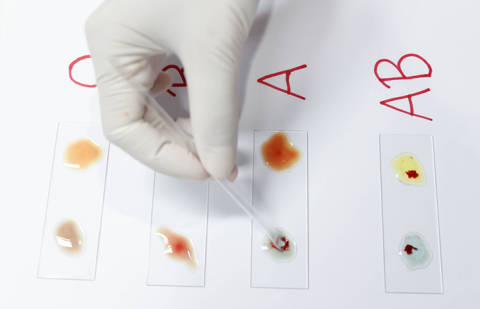What is Urine Pregnancy Test (UPT)?
The best time to perform a urine pregnancy test is one or two weeks after you've missed your period. If you perform a pee test too soon after becoming pregnant, the test may indicate that you are not pregnant even though you are. This is due to the possibility that your body hasn't yet produced enough HCG to register on the test.
By analysing a blood or urine sample for a certain hormone, a pregnancy test can determine if you are pregnant. The substance is referred to as human chorionic gonadotropin (HCG). Pregnancy is indicated by high HCG levels. Once a fertilised egg adheres to the uterine interior wall for the first ten weeks, HCG levels immediately rise.
An HCG urine test is available in your doctor's office, or you may do the test at home with a kit. Many individuals utilise a home pregnancy test before contacting their healthcare professional since these tests are almost identical. Home pregnancy tests are 97-99% reliable if you follow the instructions properly. You can receive the results in a matter of minutes. Both a lab and your doctor's office can do blood tests to check for pregnancy.
These tests are accurate in determining if you are pregnant even before your period has skipped since they can detect extremely little quantities of HCG. HCG blood tests, however, are not frequently used to detect pregnancy. That's because urine tests are more affordable, more accurate, and yield results more quickly than blood testing. An HCG blood test result might take several hours or a day.
What is Urine Pregnancy Test (UPT)?
The best time to perform a urine pregnancy test is one or two weeks after you've missed your period. If you perform a pee test too soon after becoming pregnant, the test may indicate that you are not pregnant even though you are. This is due to the possibility that your body hasn't yet produced enough HCG to register on the test.
By analysing a blood or urine sample for a certain hormone, a pregnancy test can determine if you are pregnant. The substance is referred to as human chorionic gonadotropin (HCG). Pregnancy is indicated by high HCG levels. Once a fertilised egg adheres to the uterine interior wall for the first ten weeks, HCG levels immediately rise.
An HCG urine test is available in your doctor's office, or you may do the test at home with a kit. Many individuals utilise a home pregnancy test before contacting their healthcare professional since these tests are almost identical. Home pregnancy tests are 97-99% reliable if you follow the instructions properly. You can receive the results in a matter of minutes. Both a lab and your doctor's office can do blood tests to check for pregnancy.
These tests are accurate in determining if you are pregnant even before your period has skipped since they can detect extremely little quantities of HCG. HCG blood tests, however, are not frequently used to detect pregnancy. That's because urine tests are more affordable, more accurate, and yield results more quickly than blood testing. An HCG blood test result might take several hours or a day.
What is the Purpose of the Urine Pregnancy Test (UPT)?
By looking for a specific hormone in your urine, a pregnancy test can determine if you are pregnant. Human chorionic gonadotropin is the name of the hormone (HCG). Once a fertilised egg implants in the uterus, HCG is produced in the placenta of the mother. Normally, it is only produced during pregnancy.
Around a week after you have missed a period, the HCG hormone can be detected in urine during a pregnancy test. The test can be performed with a test kit at home or a doctor's office. Since these tests are almost identical, many women decide to utilise a home pregnancy test before seeing a healthcare professional. When used correctly, home pregnancy tests have a reliability of 97-99 per cent.
Some pregnancy tests can detect HCG before you miss a period. However, waiting until the first day of a missed period will yield a more precise result. The test should be performed first thing in the morning when your urine is at its highest concentration for the best results.
What Does the Urine Pregnancy Test (UPT) Diagnose?
If you believe you are pregnant, you might require this test. Each person experiences pregnancy differently. Missed periods are the most typical indicator of early pregnancy. Some typical indications of early pregnancy might be:
- Sore, sensitive breasts
- Tired
- need to urinate frequently
- Vomiting and nauseous (also called morning sickness)
- Feeling bloated or swollen in your tummy or other parts of your body
A pregnancy test may be required if you need medical care that might endanger an unborn child to ensure that you are not pregnant. The majority of urine pregnancy test kits employ lateral-flow technology. The majority of them have a sensitivity of 25 mIU/mL for qualitatively detecting HCG in urine samples. The test displays the findings in two lines.
A monoclonal HCG antibody is one of several antibodies used by the test line to specifically identify high HCG levels. Colloidal gold particles and goat polyclonal antibodies make up the control line. A urine sample is added to the test device's sample well to perform the assay, and coloured lines are then formed as they develop. Capillary action causes the sample to move down the membrane as it reacts with the coloured conjugate.
Preparation and Procedure Required for Urine Pregnancy Test (UPT)
Put your urine collection in a clean, dry container. The first urinate sample obtained in the morning is recommended since it often has the highest concentration of HCG, although urine samples collected at any time of the day may be utilised. If testing is not done right away, keep the samples chilled for up to 72 hours at 2° to 8°C (36° to 46°F). Bring samples that have been chilled to room temperature before testing.
- Before opening the foil packet, let the urine sample and pregnancy test strip get to room temperature (15–30°C).
- The pregnancy test strip should be taken out of the pouch and used right away.
- Set up the testing equipment on a spotless, flat surface. Transfer 3 complete drops to the specimen well while holding the dropper upright, then start the timer. Prevent air bubbles from forming.
- Hold off until one or more colourful lines emerge. 5 minutes later, read the outcome. After 15 minutes, don't read the result.
Understanding Urine Pregnancy Test (UPT) Results
Your test results will confirm if you are pregnant:
- If the test yields a negative result, you might not be pregnant since there was no HCG in your sample. A negative test, however, does not automatically imply that you are not pregnant. Your body could not have produced enough HCG to show up in the test if you performed a home urine test too soon.
- It's a good idea to retake the test in a week because HCG levels rise daily throughout early pregnancy. Call your provider if two home pregnancy tests come up negative (not pregnant) but you still believe you are pregnant. Ask your physician whether you need another test if a test they perform yields a negative result.
- Having HCG in your sample indicates a positive test result. Usually, that indicates that you are pregnant. To ensure you receive the best care, it's crucial to visit your doctor as soon as possible. Your doctor could do another test to confirm your pregnancy if you used a home pregnancy test.
- Your test results may indicate that you are pregnant when you are not if you are using medication to aid in conception (fertility medications). To determine if you are indeed pregnant, see your healthcare professional.
Interpretation:
- A pair of the coloured line appears. The Control zone (C) should have one line, while the Test region should contain another line (T). This indicates that there is a good chance the patient is pregnant.
- A single-coloured line in the Control zone is negative (C). There is no visible colourful line in the Test area (T). It either suggests the patient is not pregnant or that the test was done too soon.
- INVALID: The result is unacceptable if the Control Line (C) does not appear. The most frequent causes of an invalid result are insufficient urine volume or a flawed technique.



 NABL approved
NABL approved  Most Trusted by
Most Trusted by  Accuracy &
Accuracy &  Widest Range
Widest Range 






























